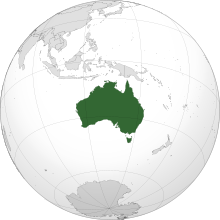Seoul Nuclear Security Summit 2012: An Analysis Of Australia’s Position
By IPCS
By Tanvi Kulkarni
Australia has consistently had an impressive record on matters nuclear. It was therefore no surprise that at the Seoul Nuclear Security Summit on March 26-27 2012, Australia presented a remarkable National Progress Report. Neatly categorized into eleven sections, Australia provided an account of its achievements and activities related to nuclear security in the areas of international legal framework, nuclear security initiatives and partnerships, domestic nuclear security, reduction of nuclear materials, protection of radioactive sources, prevention of illicit trafficking, nuclear industry, nuclear forensics and detection, working with the International Atomic Energy Agency (IAEA), and outreach and capacity-building activities. As was clear from the report and the commitments spelt out by its leaders, Australia believes in leading through example. Notable also is how the country is increasingly adhering to a concept of nuclear security distinct from a purely non-proliferation narrative.
National Progress Report highlights

Australia is party to almost every agreement mentioned in the Washington and Seoul Communiqués. It ratified the Convention on Physical Protection of Nuclear Materials (CPPNM) and its 2005 Amendment; in fact Australia encouraged the IAEA to consider revisions to this convention in light of new developments. Amendments to domestic nuclear terrorism legislations which had held up its ratification of the International Convention for the Suppression of Acts of Nuclear Terrorism (ICSANT) or the Nuclear Terrorism Convention fell through only in the days immediately preceding the Summit; however, Australia will have to further amend its extradition laws for the convention to fully come into force. Australia’s close cooperation and association with the IAEA helps the country to forward its policy on nuclear security, nuclear disarmament and non-proliferation. As one of the foremost developers of nuclear security mechanisms and procedures, Australia contributes to the Agency majorly through monetary donations, training courses, capacity-building programmes and technical assistance to the IAEA Nuclear Security Fund. It was also involved with the development of IAEA security series of guidance documents.
Australia’s HeU elimination is in its final phase and the country currently holds only 2 kg of fissile materials (to be repatriated to the US by end 2012). In 2007 the HIFAR research reactor that ran on HeU was shut down and replaced with the OPAL (light water) reactor at Lucas Heights, home to the Australian Nuclear Science and Technology Organisation (ANSTO) Research Establishment. At Seoul, Australia invited the IAEA to inspect the OPAL reactor in 2013, in the bid to encourage other states to follow suit. The Australian Prime Minister’s call for a peer review system to ensure transparency of states’ nuclear safety mechanisms however did not get much support. Besides the protection of nuclear material, Australia is one of the few countries to ensure radioactive source and material protection by implementing the IAEA code of conduct, guidance documents and effective licensing and regulatory mechanisms. In November 2011, an IAEA’s team of experts reviewed the nuclear regulatory body – Australian Radiation Protection and Nuclear Safety Agency (ARPANSA), as continuation of a 2007 Integrated Regulatory Review Service (IRRS) Mission. The team suggested building a national framework for emergency preparedness and response mechanisms through proper division of responsibility between Australia’s various nuclear organizations.
Australia is the world’s third producer of uranium oxide and second largest exporter of uranium ore. The country does not possess nuclear power or weapons infrastructure. Much of the country’s nuclear security concerns are therefore related to what it calls ‘Australian Obligated Nuclear Material (AONM)’ supplied to other countries. Australia’s bilateral safeguards agreement for supply of uranium requires the recipient states to apply INFCIRC/225 recommendations to all nuclear material. Further, all AONM are subject to the principles of equivalence and proportionality when they undergo mixing and processing in foreign countries. Along with the Netherlands, Australia leads the Working Group on nuclear forensics and detection of illicit trafficking of nuclear material at the GICNT, and report of the group is due for submission at the Mexico plenary in 2013.
Nuclear security campaign
Government-to-government nuclear diplomacy, particularly towards Asia, has been a strong component of Australia’s nuclear security campaign. Prime Minister Gillard announced at Seoul that Australia would host the Asian Nuclear Security Forum wherein the objective would be to assist and pass on risk-free technology to Southeast Asian countries wishing to pursue nuclear energy programmes. Towards this aim, Australia is also coordinating with the Japanese Atomic Energy Agency (JAEA) on the Comprehensive Support Centre for Non Proliferation and Nuclear Security (launched in February 2011). By sharing its technological and institutional expertise, Australia would also be leveraging its influence in the nuclear security architecture of Southeast Asia.
The phase since the 2010 Washington Summit has marked a significant difference in Australia’s narrative on nuclear security. Rory Medcalf from the Lowy Institute says that for Australia, nuclear security has been ‘shorthand for nuclear arms control and the nuclear non-proliferation and disarmament agenda’. The NSS shares the belief that issues like nuclear safety and security will now have to be tackled outside the NPT framework. Australia’s decision in December 2011 to change its policy and supply uranium to NPT non-signatory India is one indication of its readiness to move beyond its obsession with the NPT. At the Seoul Summit too, Australia’s narrative on nuclear security was free from the NPT.
Tanvi Kulkarni
Research Officer, IPCS
email: [email protected]
